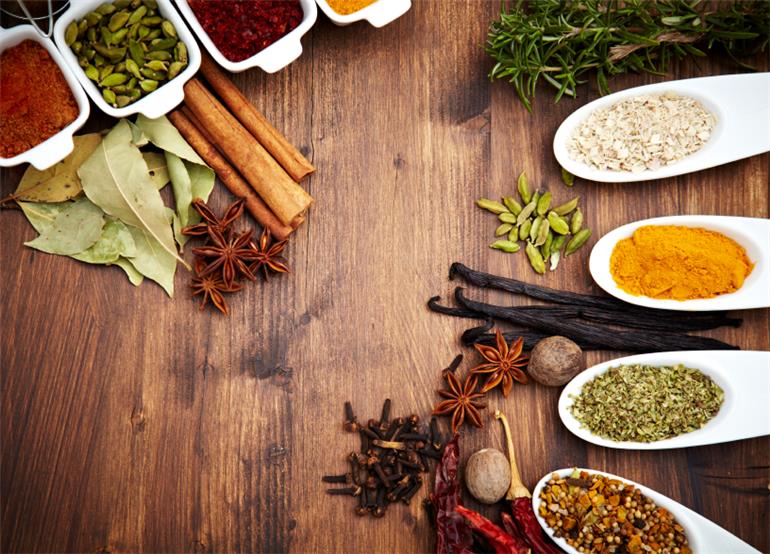If you’re starting out on your cooking adventure, it can be very daunting shopping for pantry basics. There are so many herbs, spices, and other grocery items that it can be hard to know what will be useful. We’re here to help. These are the basics. If you always have them in your cupboard, it will be possible to pull together meals on the fly without a lot of extras.
This is our list is of the basics that crop up in recipe after recipe. It may seem like a lot, but remember, this is a guide. You don’t have to buy it all in one go.
Fats & Oils:
I always use these oils. I love coconut oil too, but you don’t need it to start out with. Store olive oil in a cool dark place.
Extra virgin olive oil; canola or grape seed oil; unslated butter (use sparingly).
Dried herbs and spices:
These are the basics. Turmeric is on the list because it has definite antioxidant cancer-fighting properties. I use a lot of smoked paprika, as it adds a meaty taste to greens and soups, but you don’t need it to start out. I’ve also added basic baking items used in simple muffins, cakes and pancakes.
Herbs: Bay leaves; rosemary; oregano.
Spices: cumin; cinnamon; cayenne; ginger; turmeric; mild curry powder; whole nutmeg; whole black peppercorns, fine sea salt and/or kosher salt.
Baking: baking soda, baking powder.
Nuts and Nut Products, Seeds, Dried Fruits:
Nuts are great as snacks, and for adding healthy oils and protein to salads, breakfast grains. Keep all nuts, seeds and nut products in the fridge where they will keep indefinitely.
Sliced almonds; whole walnuts.
Tahini (sesame seed paste); sugar free peanut butter; coconut milk.
Unsulfured raisins and cranberries.
Grains & Flours:
This is a short list. As you get cooking it will lengthen. If you find you like risotto, you may want to add white Arborio rice to your list. Store whole-grain flours in the fridge.
Rolled or steel cut oats; long grain brown rice; quinoa; whole-wheat pastry flour; whole-wheat pasta; white rice (for when you need something easy on the stomach); cous cous; polenta.
Legumes:
There are SO many varieties of these to choose from. Stick to these to start out with and you’ll be golden. None of the dried legumes here need soaking. Soy products like miso, tofu and tempeh are important to a vegetarian diet, otherwise they can be bought as needed.
Canned: Cannellini beans; black beans; chickpeas.
Dried: Red split lentils; Green French lentils; split peas; black eyed peas.
Soy products: miso; tofu; tempeh.
Frozen & Canned foods:
We’ve already mentioned canned legumes, and canned tomatoes are always a better alternative for hothouse grown fresh in a pasta sauce. I find frozen fruits and veg a great standby. Frozen on the farm, they often have a better nutritional value than the same fruits and veg bought out of season, plus they will keep in the freezer for months. Frozen green peas and lima beans add protein and a dash of color to pastas and soups, while spinach saves time. Fruits can brighten up a winter meal in compotes, crumbles or delicious gelato.
Veggies: small garden peas; baby lima beans or edamame beans; leaf spinach.
Fruits: blueberries; raspberries; mango chunks or pulp; peaches.
Canned: whole peeled tomatoes; diced tomatoes.
Fresh Basics:
Some fresh items to keep replenished in your pantry at all times. You will always find a use for them. You can always blend parsley into a pesto with a little olive oil and freeze it:
Carrots; onions; celery, garlic; Italian parsley; eggs; ginger, lemons.
